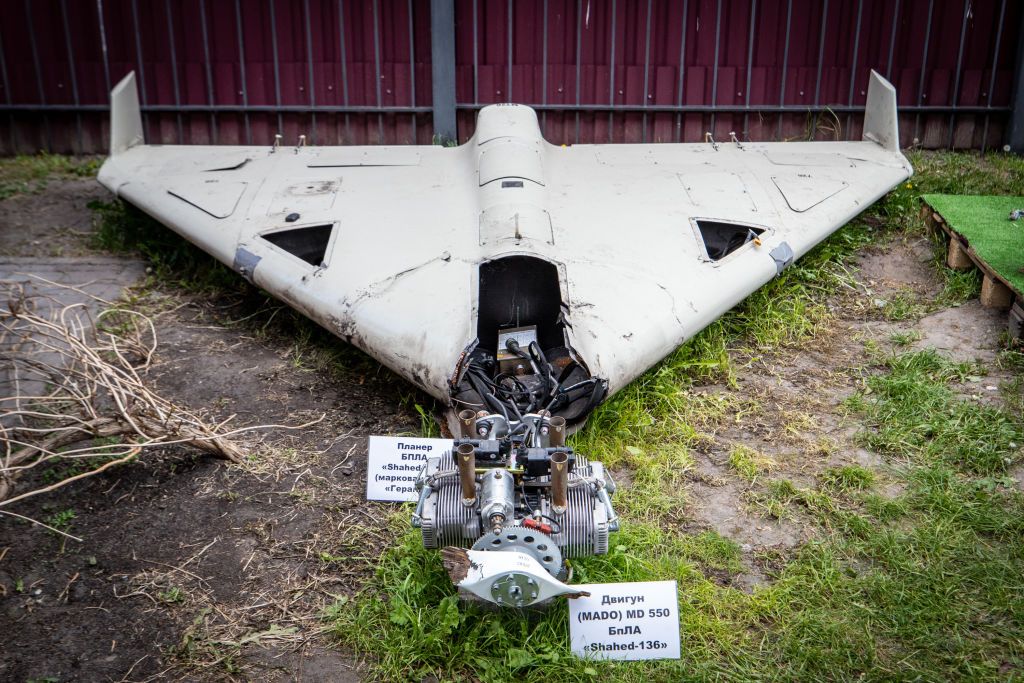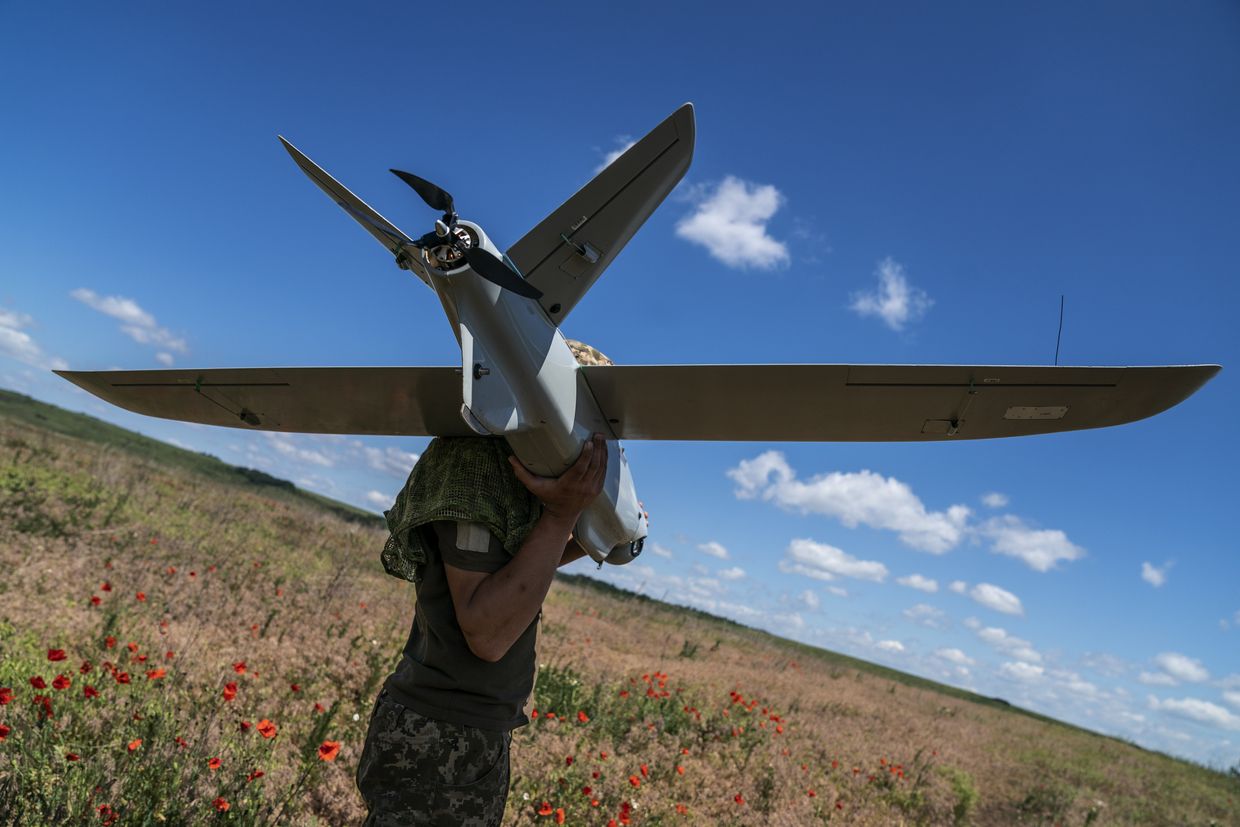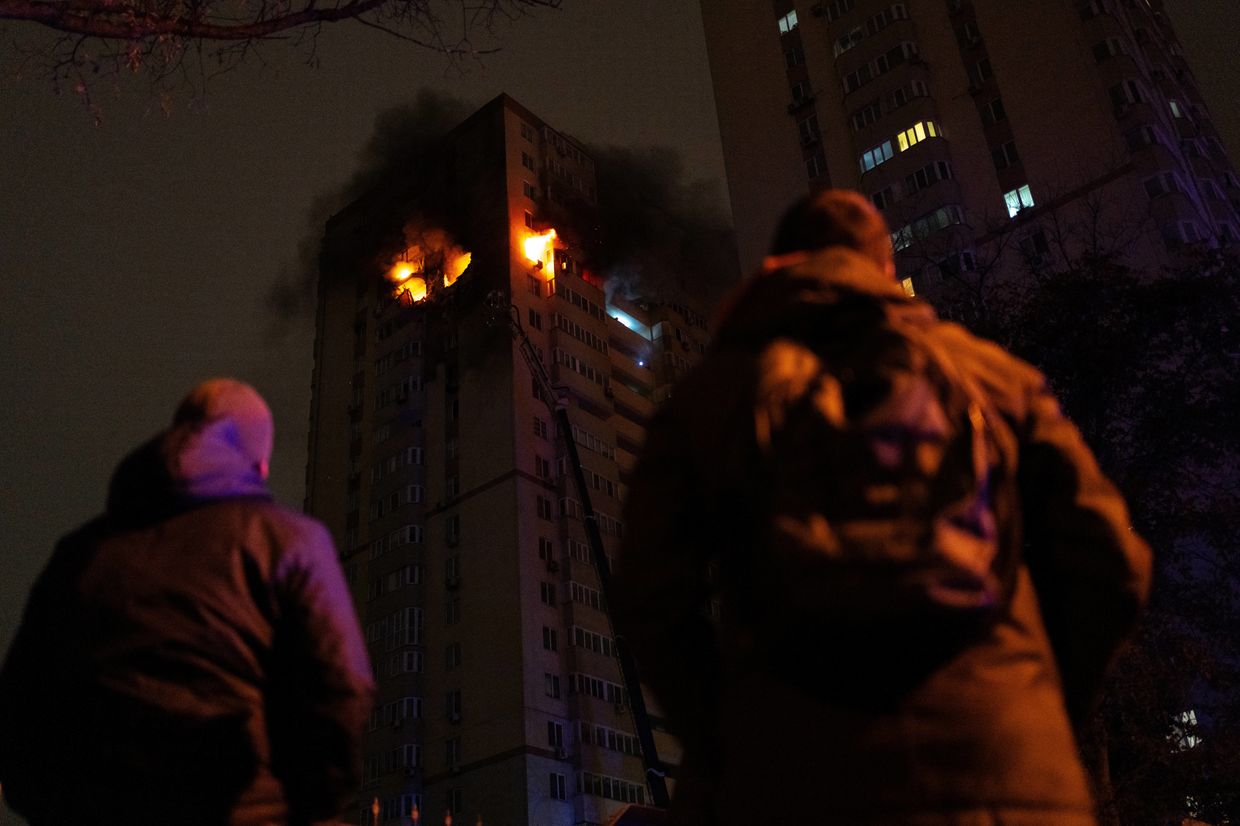
Russian forces use cheap decoy drones with foreign components to overload Ukraine’s air defense system, Ukraine’s military intelligence (HUR) reported on Nov. 18.
Russia has recently increased the number of large-scale drone attacks against Ukrainian cities, depleting Ukraine’s air defense systems and targeting critical infrastructure.
According to HUR, Russian manufacturers use components from the U.S., China, the Netherlands, and Switzerland to produce the Gerbera drone, a cheaper and less deadly equivalent of Iran’s Shahed, at a plant in Yelabuga, in the Republic of Tatarstan, central Russia.
The Gerbera drone can carry a combat payload similar to that of a kamikaze drone and conduct reconnaissance missions, particularly to detect air defense positions and record hits from other attack drones.
The Gerbera is ten times cheaper than the Shahed or Geran drones due to the use of simple materials, such as plywood and foam. Yet, the drone contains a set of components from foreign manufacturers that “are common for Russian weapons,” according to HUR.
Examination of the downed drones showed that Russia manufactures Gerberas based on a Chinese prototype using foreign components imported from China.

The Gerbera drones were developed by the Chinese model aircraft manufacturer Skywalker Technology Co., Ltd., which also produces fuselages and organizes the supply of kits to Russia.
The Gerbera’s jamming-resistant antenna (CRPA) contains chips from Analog Devices and Texas Instruments, both made in the U.S., and NXP Semiconductors, made in the Netherlands. The flight controller also uses components manufactured by Texas Instruments, Atmel (USA), STMicroelectronics, U-Blox (Switzerland), NXP Semiconductors (Netherlands), and XLSEMI (China).
The DLE60 engine is manufactured by the Chinese company Mile Hao Xiang Technology Co, Ltd. In the summer of 2024, the U.S. sanctioned this company for supplying Russia.
Supplies are made through third-party companies, according to HUR.
“At this point, the biggest advantage that Russia may have in such attacks is sheer numbers of drones,” Samuel Bendett, a senior fellow at the Center for a New American Security think tank, told the Kyiv Independent.
Bendett mentioned the Alabuga Special Economic Zone in Russia’s Republic of Tatarstan, where a Shahed-type drones plant is located. In May, the Wall Street Journal (WSJ) reported, citing a contract leaked by the Prana Network hacker group, that the factory already produces 4,500 Shaheds and aims to increase this number to 6,000.
“It appears that Russian efforts in Alabuga have ensured that the Russian military has thousands such UAVs at its disposal along with other simpler, smaller variance identified recently that fly alongside these official Geran (Russian name for Shahed-type) UAVs,” Bendett said.
On Nov. 17, Russian forces launched one of the heaviest aerial strikes against the country throughout the full-scale war, primarily targeting the energy grid. Ukrainian air defenses shot down 102 of the 120 missiles and 42 of the 90 drones launched by Russia overnight.


